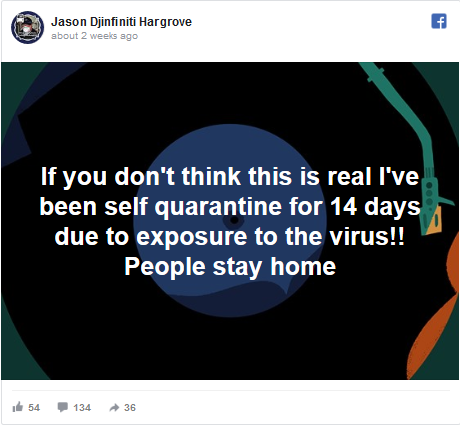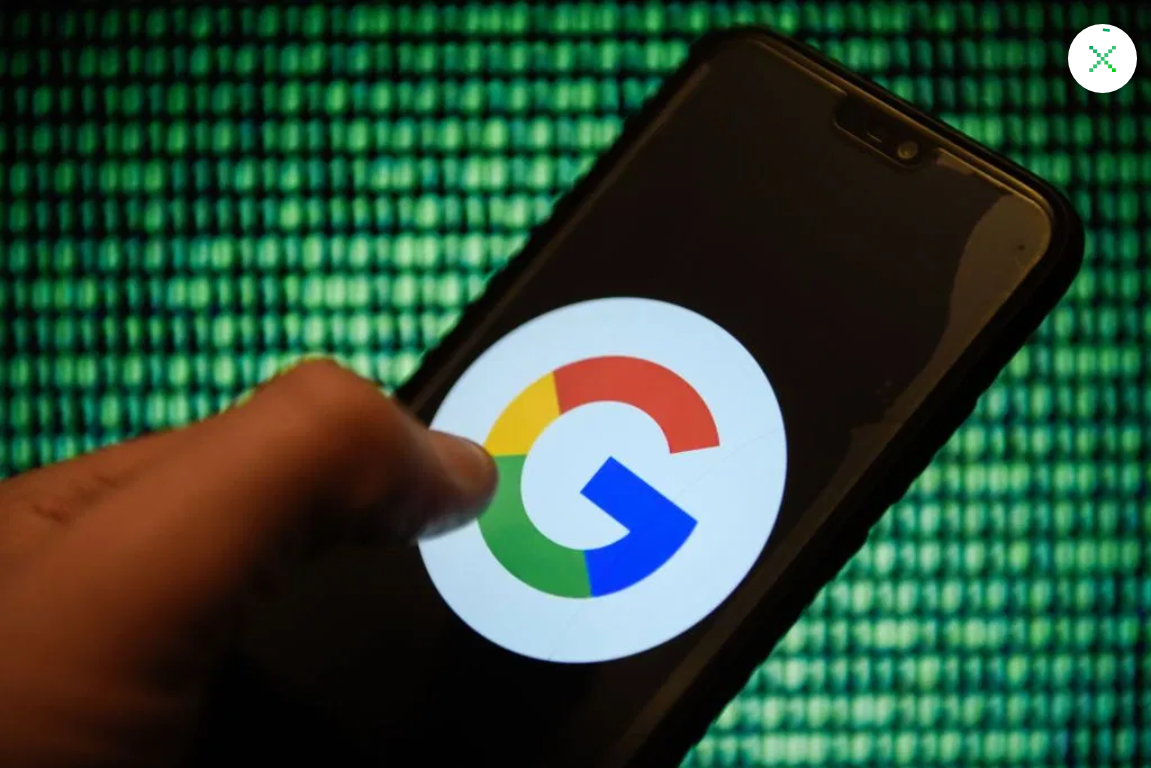Selena Gomez shares that she has bipolar disorder in conversation with Miley Cyrus
Selena Gomez and Miley Cyrus had a moving virtual conversation on Friday in which Gomez revealed that she was recently diagnosed with bipolar disorder.
The two former Disney stars appeared on Cyrus’ Instagram show “Bright Minded,” where Gomez talked openly about her health.”Recently, I went to one of the best mental hospitals in America, McLean Hospital, and I discussed that after years of going through a lot of different things, I realized that I was bipolar,” Gomez said. “And so when I got to know more information, it actually helps me. It doesn’t scare me once I know it.”
The two singers reconnected, they said, after Gomez left Cyrus a butterfly emoji in the comment section of an Instagram post.”I’m just really happy that we did this new DM. It was very sweet because you just sent a butterfly emoji,” Cyrus recalled. “And that’s enough, connecting with people and letting them know that you’re there. A butterfly emoji is totally enough.”
Cyrus added that during the coronavirus pandemic, she’s found herself “writing a lot” to help her process what’s going on.
“A lot of it is connecting with people that maybe you haven’t been the greatest to that you may not have thought about,” she said. “I feel like there’s been a lot of people I’ve gotten to do that with not necessarily saying it was bad, but just saying, ‘Hey, I hope you’re safe. I hope you’re doing okay,’ and that you know you’re on my side. I’m only sending you love from this end.'”Gomez advised people who are not taking social distancing seriously to please think of those “sacrificing their lives, adding that she has donated money to hospitals.The two sent a message of love and encouraged others to donate to non-profit organizations aiding in the frontline of the coronavirus pandemic. “I’m so happy to have you on the show and got to reconnect,” Cyrus told Gomez. “Send me butterflies any time. When all this has moved on and we can connect, we’ll just hug.”
Article via CNN
Check out some Lovelyti videos:
Selena Gomez VS Twitter For Her Response To The Taylor Swift Drama?
Selena Gomez & The Beliebers VS Justin Bieber & Sofia Richie #SelenaEndedJustinParty ?
CDC recommend Americans wear non-medical CLOTH masks
PLEASE PLEASE FOLKS DO NOT HOARD THESE!
Sesame Street why bears smile
Maybe folks need to start looking at this classic PSA from Sesame Street. Why Do Bear Smile. PLEASE if you have children teach them about covering their mouth and nose when they sneeze or cough or both. Our lives depend on it . And you throw the tissue away in the garbage. Or trash. Then go wash your hands. With soap and water. And if you can’t get to sink with soap and water in his hand sanitizer. #COVID19
Google is now publishing coronavirus mobility reports, feeding off users’ location history
Google is giving the world a clearer glimpse of exactly how much it knows about people everywhere — using the coronavirus crisis as an opportunity to repackage its persistent tracking of where users go and what they do as a public good in the midst of a pandemic.
In a blog post today, the tech giant announced the publication of what it’s branding COVID-19 Community Mobility Reports, an in-house analysis of the much more granular location data it maps and tracks to fuel its ad-targeting, product development and wider commercial strategy to showcase aggregated changes in population movements around the world.
The coronavirus pandemic has generated a worldwide scramble for tools and data to inform government responses. In the EU, for example, the European Commission has been leaning on telcos to hand over anonymized and aggregated location data to model the spread of COVID-19.
Google’s data dump looks intended to dangle a similar idea of public policy utility while providing an eyeball-grabbing public snapshot of mobility shifts via data pulled off of its global user-base.
In terms of actual utility for policymakers, Google’s suggestions are pretty vague. The reports could help government and public health officials “understand changes in essential trips that can shape recommendations on business hours or inform delivery service offerings,” it writes.
“Similarly, persistent visits to transportation hubs might indicate the need to add additional buses or trains in order to allow people who need to travel room to spread out for social distancing,” it goes on. “Ultimately, understanding not only whether people are traveling, but also trends in destinations, can help officials design guidance to protect public health and essential needs of communities.”
The location data Google is making public is similarly fuzzy — to avoid inviting a privacy storm — with the company writing it’s using “the same world-class anonymization technology that we use in our products every day,” as it puts it.
“For these reports, we use differential privacy, which adds artificial noise to our datasets enabling high quality results without identifying any individual person,” Google writes. “The insights are created with aggregated, anonymized sets of data from users who have turned on the Location History setting, which is off by default.”
“In Google Maps, we use aggregated, anonymized data showing how busy certain types of places are—helping identify when a local business tends to be the most crowded. We have heard from public health officials that this same type of aggregated, anonymized data could be helpful as they make critical decisions to combat COVID-19,” it adds, tacitly linking an existing offering in Google Maps to a coronavirus-busting cause.
The reports consist of per country, or per state, downloads (with 131 countries covered initially), further broken down into regions/counties — with Google offering an analysis of how community mobility has changed vs a baseline average before COVID-19 arrived to change everything.
So, for example, a March 29 report for the whole of the U.S. shows a 47 percent drop in retail and recreation activity vs the pre-CV period; a 22% drop in grocery & pharmacy; and a 19% drop in visits to parks and beaches, per Google’s data.
While the same date report for California shows a considerably greater drop in the latter (down 38% compared to the regional baseline); and slightly bigger decreases in both retail and recreation activity (down 50%) and grocery & pharmacy (-24%).
Google says it’s using “aggregated, anonymized data to chart movement trends over time by geography, across different high-level categories of places such as retail and recreation, groceries and pharmacies, parks, transit stations, workplaces, and residential.” The trends are displayed over several weeks, with the most recent information representing 48-to-72 hours prior, it adds.
The company says it’s not publishing the “absolute number of visits” as a privacy step, adding: “To protect people’s privacy, no personally identifiable information, like an individual’s location, contacts or movement, is made available at any point.”
Google’s location mobility report for Italy, which remains the European country hardest hit by the virus, illustrates the extent of the change from lockdown measures applied to the population — with retail & recreation dropping 94% vs Google’s baseline; grocery & pharmacy down 85%; and a 90% drop in trips to parks and beaches.
The same report shows an 87% drop in activity at transit stations; a 63% drop in activity at workplaces; and an increase of almost a quarter (24%) of activity in residential locations — as many Italians stay at home instead of commuting to work.
It’s a similar story in Spain — another country hard-hit by COVID-19. Though Google’s data for France suggests instructions to stay-at-home may not be being quite as keenly observed by its users there, with only an 18% increase in activity at residential locations and a 56% drop in activity at workplaces. (Perhaps because the pandemic has so far had a less severe impact on France, although numbers of confirmed cases and deaths continue to rise across the region.)
While policymakers have been scrambling for data and tools to inform their responses to COVID-19, privacy experts and civil liberties campaigners have rushed to voice concerns about the impacts of such data-fueled efforts on individual rights, while also querying the wider utility of some of this tracking.
And yes, the disclaimer is very broad. I’d say, this is largely a PR move.
Apart from this, Google must be held accountable for its many other secondary data uses. And Google/Alphabet is far too powerful, which must be addressed at several levels, soon. https://t.co/oksJgQAPAY
— Wolfie Christl (@WolfieChristl) April 3, 2020
Contacts tracing is another area where apps are fast being touted as a potential solution to get the West out of economically crushing population lockdowns — opening up the possibility of people’s mobile devices becoming a tool to enforce lockdowns, as has happened in China.
“Large-scale collection of personal data can quickly lead to mass surveillance,” is the succinct warning of a trio of academics from London’s Imperial College’s Computational Privacy Group, who have compiled their privacy concerns vis-a-vis COVID-19 contacts tracing apps into a set of eight questions app developers should be asking.
Discussing Google’s release of mobile location data for a COVID-19 cause, the head of the group, Yves-Alexandre de Montjoye, gave a general thumbs up to the steps it’s taken to shrink privacy risks. Although he also called for Google to provide more detail about the technical processes it’s using in order that external researchers can better assess the robustness of the claimed privacy protections. Such scrutiny is of pressing importance with so much coronavirus-related data grabbing going on right now, he argues.
“It is all aggregated; they normalize to a specific set of dates; they threshold when there are too few people and on top of this they add noise to make — according to them — the data differentially private. So from a pure anonymization perspective it’s good work,” de Montjoye told TechCrunch, discussing the technical side of Google’s release of location data. “Those are three of the big ‘levers’ that you can use to limit risk. And I think it’s well done.”
“But — especially in times like this when there’s a lot of people using data — I think what we would have liked is more details. There’s a lot of assumptions on thresholding, on how do you apply differential privacy, right?… What kind of assumptions are you making?” he added, querying how much noise Google is adding to the data, for example. “It would be good to have a bit more detail on how they applied [differential privacy]… Especially in times like this it is good to be… overly transparent.”
While Google’s mobility data release might appear to overlap in purpose with the Commission’s call for EU telco metadata for COVID-19 tracking, de Montjoye points out there are likely to be key differences based on the different data sources.
“It’s always a trade off between the two,” he says. “It’s basically telco data would probably be less fine-grained, because GPS is much more precise spatially and you might have more data points per person per day with GPS than what you get with mobile phone but on the other hand the carrier/telco data is much more representative — it’s not only smartphone, and it’s not only people who have latitude on, it’s everyone in the country, including non smartphone.”
There may be country specific questions that could be better addressed by working with a local carrier, he also suggested. (The Commission has said it’s intending to have one carrier per EU Member State providing anonymized and aggregated metadata.)
On the topical question of whether location data can ever be truly anonymized, de Montjoye — an expert in data reidentification — gave a “yes and no” response, arguing that original location data is “probably really, really hard to anonymize”.
“Can you process this data and make the aggregate results anonymous? Probably, probably, probably yes — it always depends. But then it also means that the original data exists… Then it’s mostly a question of the controls you have in place to ensure the process that leads to generating those aggregates does not contain privacy risks,” he added.
Perhaps a bigger question related to Google’s location data dump is around the issue of legal consent to be tracking people in the first place.
While the tech giant claims the data is based on opt-ins to location tracking the company was fined $57M by France’s data watchdog last year for a lack of transparency over how it uses people’s data.
Then, earlier this year, the Irish Data Protection Commission (DPC) — now the lead privacy regulator for Google in Europe — confirmed a formal probe of the company’s location tracking activity, following a 2018 complaint by EU consumers groups which accuses Google of using manipulative tactics in order to keep tracking web users’ locations for ad-targeting purposes.
“The issues raised within the concerns relate to the legality of Google’s processing of location data and the transparency surrounding that processing,” said the DPC in a statement in February, announcing the investigation.
The legal questions hanging over Google’s consent to track people likely explains the repeat references in its blog post to people choosing to opt in and having the ability to clear their Location History via settings. (“Users who have Location History turned on can choose to turn the setting off at any time from their Google Account, and can always delete Location History data directly from their Timeline,” it writes in one example.)
In addition to offering up coronavirus mobility porn reports — which Google specifies it will continue to do throughout the crisis — the company says it’s collaborating with “select epidemiologists working on COVID-19 with updates to an existing aggregate, anonymized dataset that can be used to better understand and forecast the pandemic.”
“Data of this type has helped researchers look into predicting epidemics, plan urban and transit infrastructure, and understand people’s mobility and responses to conflict and natural disasters,” it adds.
Article via TechCrunch
Detroit bus driver who complained about a coughing passenger dies of coronavirus days later
Jason Hargrove could not hide his outrage at the passenger who he said openly coughed on his bus in the middle of a pandemic.
In between shifts last month, Hargrove, a city bus driver with the Detroit Department of Transportation, recounted in an obscenity-laden Facebook video how a woman onboard had just coughed in front of him and other passengers, even as the novel coronavirus continued to spread across the United States.
“We out here as public workers, doing our job, trying to make an honest living to take care of our families,” he said on March 21, “but for you to get on the bus and stand on the bus and cough several times without covering up your mouth, and you know we’re in the middle of a pandemic, that lets me know that some folks don’t care.”
The 50-year-old bus driver added, “This is real … For us to get through this and get over this, man, y’all need to take this s— serious. There’s folks dying out here.”
On Thursday, the head of the Detroit bus drivers’ union announced that Hargrove had died of covid-19 on Wednesday. Glenn Tolbert, the head of the union, told the Detroit News that Hargrove started to feel ill on March 25, four days after the incident with the coughing passenger. A week later, he was dead.
While there’s no way of knowing whether Hargrove transmitted the illness from the passenger referenced in his video or if he contracted it elsewhere, the bus driver’s death and his foreboding words have rocked Detroit, one of the nation’s covid-19 hot spots.
“I don’t know how you can watch [the video] and not tear up,” Detroit Mayor Mike Duggan (D) said at a Thursday news conference. “He knew his life was being put in jeopardy … by someone who didn’t take this seriously and now he’s gone.”
His death comes at a time when bus drivers in Detroit have expressed concern over whether the city and state are doing enough to protect public transportation workers from infection. On March 17, a few days before Hargrove’s plea, bus drivers shut down public transportation by calling in sick in fear of an outbreak, the Detroit Free Press reported. The city restarted the service on March 18 only after agreeing to keep the first row of seats empty, to have passengers enter and exit from the rear of the bus, and urging riders to stay 10 feet away from drivers.
But fears among drivers worried about getting infected have intensified with the news of Hargrove’s death, Tolbert told the Detroit News. He told WXYZ that some drivers have suggested a work stoppage.
“They’re obviously scared,” Tolbert, who has also tested positive for the coronavirus, said to the News. “They’re up in arms. It’s the fear of the unknown.”
In the days leading up to the incident, it was apparent that Hargrove understood the severity of the coronavirus, posting to his social media accounts about its effect on Detroit and the rest of the country. On his Facebook page, Hargrove, who was also a love DJ, posted photos of him wearing a mask inside his bus, as well as images of signs on the first row saying, “Please leave vacant.”
Then, on a Saturday afternoon, Hargrove said a passenger openly coughed five times around eight or nine riders on the bus.
“I’m steaming right now,” he said in a Facebook comment.
He’d exit the bus and hop on Facebook Live to vent in an 8½-minute video.
“I’m trying to be the professional,” Hargrove said. “They want me to be and I kept my mouth closed, but it’s at some point in time where you got to draw the line and say enough is enough. I feel violated. I feel violated for the folks that were on the bus when this happened.”
Despite his frustration with the city and its protection of public transit workers, Hargrove insisted that his anger could only be directed at the people not taking the proper precautions to help curb the spread of the virus.
“I ain’t blaming nobody — nobody. Not the city, not the mayor, not the department, not the state of Michigan, not the government, nobody, not the president,” Hargrove said. “It’s her fault. It’s people like her who don’t take [the coronavirus] for real while this still exists and is still spreading.”
On March 23, two days after the incident, he wrote about how he was self-quarantined for two weeks due to exposure to covid-19. He fell ill shortly afterward.

Duggan announced on Thursday that the city is the first in the nation to test first responders, bus drivers and health-care workers with a new rapid testing kit that gets results in 15 minutes or less, The Washington Post reported.
The scramble for the rapid coronavirus tests everybody wants
The mayor, however, still had his mind on Hargrove. At one point, Duggan said “everybody in America” should watch the bus driver’s video.
“It’s something I’m going to think about for a long time,” Duggan said.
Toward the end of the video, Hargrove returned to the bus and said it was time to get back to work. He was concerned, but still had time to mix in some smiles and laughs for friends chatting with him during the live video. He pleaded to his friends to cover up their face and wear gloves if they had to go out.
“If you see somebody coughing and they don’t cover up, bust them in the back of their head,” he said with a hopeful grin. “I’m out of here, y’all. I love, y’all.”
Article via WashingtonPost
Check out some Lovelyti videos:
Hundreds of Americans evacuated from China as coronavirus infections increase+ MORE secret videos
Tom Hanks & Wife test positive- Trump Bans travel-NBA suspends season due to coronavirus #pandemic
Idris Elba tests positive After Waka claims Black People can’t get the Coronavirus
Tamron Hall interviews Nurse Melissa Scott who quit her job on Instagram
I believe there’s your story her or his story then there’s the truth. Which one do you believe? I know one thing. Not everything needs to be posted on social media. I get it it’s hard especially with what’s going on with the coronavirus. We all just need to stop take a deep breath and calm hell down!
How to unpack and disinfect your groceries COVID-19 Dr Oz
I would have never thought to do this stay safe TiSippers
How to clean a sponge so that it is free from germs and viruses

Janilyn Hutchings, a certified professional in food safety and a food scientist for StateFoodSafety, says about sponges: “If they’re dirty, they can spread germs to everything they touch, from dishes and utensils to the kitchen counter and appliances.”
Why you should clean a sponge regularly
Yeast, mold, bacteria: All sorts of germs can make your sponges smelly, or worse.
A 2017 study found that fecal coliform bacteria lurks in 44 percent of kitchens, often in sponges and dishcloths. This E. Coli bacteria can be harmless, but certain strains may cause diarrhea, cramps and vomiting. In fact, a study conducted in Japan found that kitchen sponges were second only to drain traps when it came to the highest levels of bacterial contamination in the house.
Your sponge might also harbor other types of bacteria like Staphylococcus aureus or Campylobacter, which can also cause diarrhea. You’re probably more than ready to clean that sponge now, right? Jennifer Quinlan, PhD, professor in Drexel University’s Department of Nutrition Sciences, says don’t wait.
“The general recommendation is to just do it daily,” Quinlan says.
Methods of cleaning sponges
The USDA’s ARS Food Technology and Safety Laboratory has found that two methods work to disinfect a kitchen sponge and make it safe to use again:
Dishwasher: If you run the dishwasher every night before you head off to bed, Quinlan suggests just tossing the kitchen sponge on the top shelf and turning on the dishwasher. The heat disinfects the sponge and your dishes at the same time.
Microwave: “You basically dampen it, you make sure it’s wet, put it in the microwave and you microwave it for a minute,” says Quinlan. “You’ll see steam coming off of it.” Again, the heat is the hero here. But this method isn’t foolproof, so check out this article on how to do it properly.
According to the USDA, these two methods are 99 percent effective in killing off bacteria present in sponges. “It’s really that simple,” says Quinlan.
The following are methods not recommended:
Hot soapy water: Hot tap water won’t be hot enough to get rid of the germs, according to Quinlan. You could boil water on the stove and soak your sponge in that, but only if you don’t have a microwave or dishwasher.
Bleach bath: Heat is more effective than bleach for this purpose, according to Quinlan. “It’s the heat that kills the pathogens,” says Quinlan. Plus, if you try to bleach your sponges, the bleach doesn’t always work its way through the entire sponge. And you risk leaving bleach behind and potentially getting onto food prep surfaces and food.
When to throw your sponge out
At some point, you should just throw the sponge away. Two weeks is a pretty good lifespan for a typical kitchen sponge, says Hutchings.
“Replacing it at least every two weeks will keep the bacteria from spreading and growing, making you sick if you use it,” she says. “You should also replace them if they smell funny and you can’t get rid of the odor, or if they start breaking apart.”
A 2017 study suggests that cleaning your kitchen sponges doesn’t really kill the bacteria as well as you’d think anyway. You might just be better off replacing your sponges each week than trying to clean them.
Via: https://lovelyti.com/?











